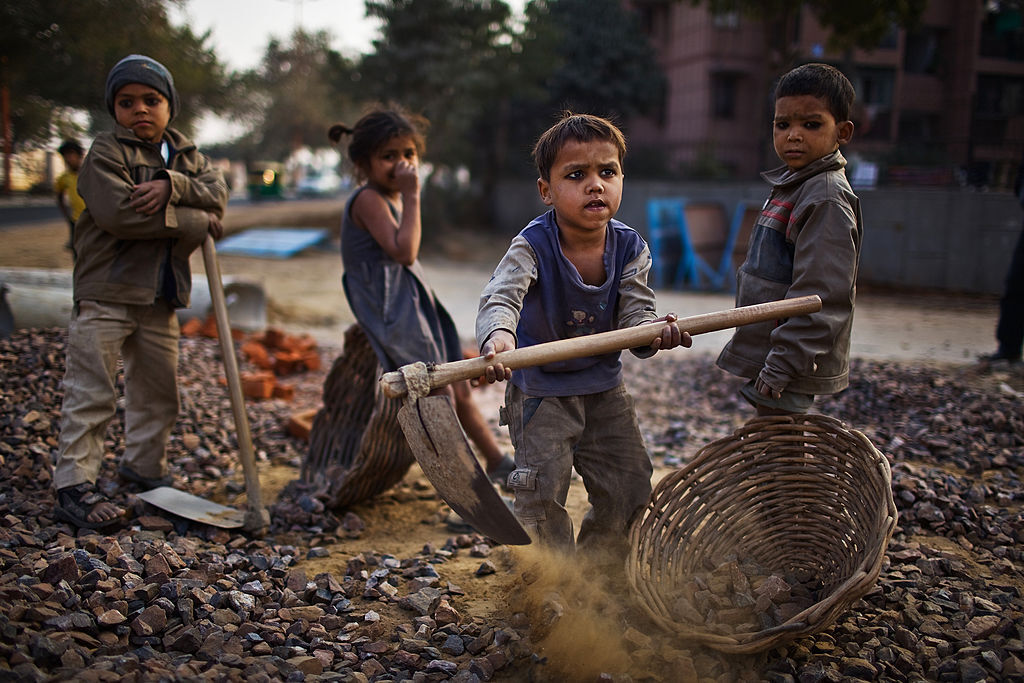Missouri Enacts Comprehensive School Safety Legislation to Advance Sustainable Development Goals
The state of Missouri has passed Senate Bill 68, a bipartisan school safety package signed into law by Governor Mike Kehoe. The legislation, which becomes law at the end of August, introduces a series of mandates for K-12 public schools aimed at improving the educational environment and ensuring student safety. These measures align directly with several United Nations Sustainable Development Goals (SDGs), particularly SDG 4 (Quality Education), SDG 3 (Good Health and Well-being), and SDG 16 (Peace, Justice and Strong Institutions).
Enhancing Educational Environments and Outcomes (SDG 4: Quality Education)
A central component of the new law is its focus on creating a more effective and equitable learning environment, which is the core mission of SDG 4.
Bell-to-Bell Cell Phone Restriction
To foster a more focused academic atmosphere, the law requires all public school districts to implement a policy restricting student cell phone use during school hours. The objective is to minimize distractions and encourage direct interaction between students and with educators, thereby improving the quality of instruction and social development. School boards are granted the authority to determine the specific method of implementation, such as requiring phones to be stored in designated areas. Exceptions are permitted for students who require their devices for documented educational or medical purposes. This policy directly supports SDG Target 4.1, which aims to ensure that all children complete free, equitable, and quality primary and secondary education.
Prioritizing Student and Staff Well-being (SDG 3: Good Health and Well-being)
The legislation places significant emphasis on the physical and mental health of the school community, reflecting the ambitions of SDG 3 to ensure healthy lives and promote well-being for all at all ages.
Comprehensive Emergency Preparedness
To safeguard students and staff, the law mandates several proactive safety measures:
- Schools must develop and maintain official response plans for various threats, including armed intruders, natural disasters, and medical emergencies.
- Students are required to participate in active shooter drills to ensure preparedness.
- During enrollment, schools must request assessments to identify students exhibiting behaviors that may indicate a risk to themselves or others, allowing for early intervention and support.
Medical Response and Training
The law strengthens on-campus medical readiness in direct support of SDG Target 3.d, which focuses on strengthening the capacity for early warning, risk reduction, and management of health risks.
- School employees will be required to undergo CPR training.
- Schools must establish a formal response plan for cardiac arrests and other life-threatening medical emergencies.
Strengthening Institutional Frameworks for Peace and Safety (SDG 16: Peace, Justice and Strong Institutions)
Senate Bill 68 reinforces the role of schools as safe, inclusive, and effective institutions, a key tenet of SDG 16, which aims to promote peaceful and inclusive societies for sustainable development.
Infrastructure and Procedural Safeguards
The law outlines several requirements to build a more secure and just school environment:
- Security Upgrades: By 2029, and contingent upon state funding, new school construction must include doors with anti-intruder locks and bullet-resistant window film.
- Proactive Reporting: Schools must annually provide students with age-appropriate information about the Missouri State Highway Patrol’s Courage2ReportMO confidential reporting mechanism.
- Intervention Process: A legal framework is established allowing schools to petition the court system to exclude a student if there is a demonstrated likelihood of danger to others. This process includes a mandate to provide an alternative educational placement for the student, ensuring that justice and the right to education are balanced.
By addressing parental concerns regarding emergency communication through established school notification systems, the law further reinforces the development of resilient and responsive institutional practices.
1. Which SDGs are addressed or connected to the issues highlighted in the article?
SDG 4: Quality Education
- The article focuses on a new law for Missouri K-12 public schools. The cell phone ban is explicitly aimed at improving the educational environment, with Gov. Kehoe stating it is to help “get better results for our kids” and ensure they “are ready for the real world.” The broader safety package aims to create a secure learning environment, which is a prerequisite for quality education.
SDG 3: Good Health and Well-being
- The school safety package contains several provisions directly related to health. It mandates that schools must have response plans for “medical emergencies,” a specific plan for when people have “heart problems or other life-threatening emergencies,” and requires school employees to take “CPR training.” Furthermore, it requires schools to conduct assessments to determine if students are at risk of “endangering themselves or others,” touching upon mental well-being.
SDG 16: Peace, Justice and Strong Institutions
- A primary focus of the law is to prevent violence and enhance safety within schools, which are key public institutions. The article details requirements for “response plans for armed intruders,” “active shooter drills,” and physical security upgrades like “anti-intruder locks and bullet-resistant window film.” These measures are designed to reduce violence and create peaceful, safe environments, directly aligning with the goals of SDG 16.
2. What specific targets under those SDGs can be identified based on the article’s content?
SDG 4: Quality Education
- Target 4.a: “Build and upgrade education facilities that are child, disability and gender sensitive and provide safe, non-violent, inclusive and effective learning environments for all.” The article directly addresses this target by mandating that schools must have “doors with anti-intruder locks and bullet-resistant window film in new construction by 2029.” This is a specific upgrade to education facilities to ensure they are safe and non-violent.
SDG 3: Good Health and Well-being
- Target 3.d: “Strengthen the capacity of all countries, in particular developing countries, for early warning, risk reduction and management of national and global health risks.” The law strengthens the capacity of schools to manage health risks by requiring them to have “a plan to respond when people have heart problems or other life-threatening emergencies” and mandating “CPR training” for school employees. The requirement for student risk assessments also contributes to early warning and risk reduction for mental health issues.
SDG 16: Peace, Justice and Strong Institutions
- Target 16.1: “Significantly reduce all forms of violence and related death rates everywhere.” The entire school safety package is aimed at this target within the context of educational institutions. Specific measures mentioned in the article, such as requiring “response plans for armed intruders,” mandating “active shooter drills,” and allowing courts to “exclude students from school if there is a likelihood of danger,” are all direct actions to reduce violence and potential death rates.
3. Are there any indicators mentioned or implied in the article that can be used to measure progress towards the identified targets?
Indicators for SDG 4, Target 4.a
- The article implies progress can be measured by the number or proportion of schools that have implemented the required safety upgrades. A specific indicator is the “Proportion of schools with anti-intruder locks and bullet-resistant window film by 2029.”
Indicators for SDG 3, Target 3.d
- Progress towards this target can be measured by the implementation of the health-related mandates. Implied indicators include:
- Proportion of school employees who have completed CPR training.
- Existence and quality of school response plans for medical emergencies.
- Implementation of student risk assessments during enrollment.
Indicators for SDG 16, Target 16.1
- The article provides several measurable actions that serve as indicators of progress in reducing violence:
- Number of schools with established response plans for armed intruders.
- Confirmation that students are participating in active shooter drills as required.
- Annual provision of information to students on the “Courage2ReportMO reporting mechanism.”
4. Table of SDGs, Targets, and Indicators
| SDGs | Targets | Indicators |
|---|---|---|
| SDG 4: Quality Education | 4.a: Build and upgrade education facilities…and provide safe, non-violent, inclusive and effective learning environments for all. |
|
| SDG 3: Good Health and Well-being | 3.d: Strengthen the capacity…for early warning, risk reduction and management of…health risks. |
|
| SDG 16: Peace, Justice and Strong Institutions | 16.1: Significantly reduce all forms of violence and related death rates everywhere. |
|
Source: missourinet.com







